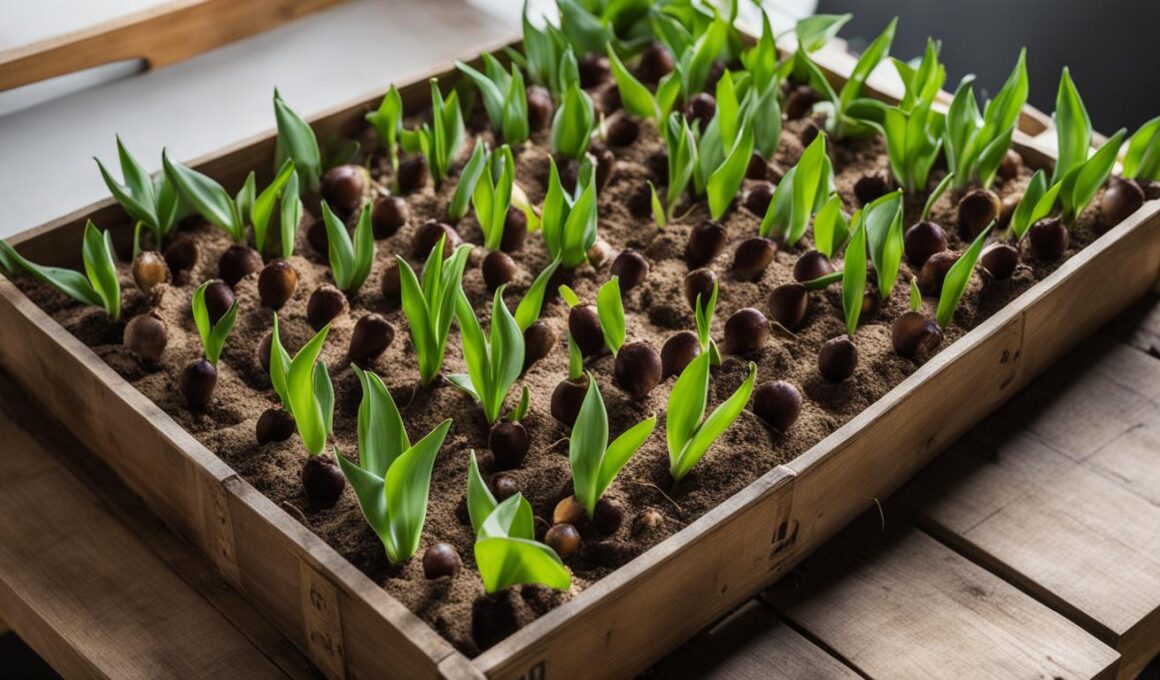To preserve your tulip bulbs for next year’s bloom, follow these easy storage tips. After the flowers have died and the leaves have yellowed and died back, cut the stems off the bulbs with pruning shears. Dig up the bulbs, remove the dead leaves and roots, and wipe off any soil with a paper towel. Allow the bulbs to dry on a tray in a cool, dry place for two days. Inspect the bulbs and discard any that show signs of disease or rot.
How to Store Tulip Bulbs: Step-by-Step Guide
Once your tulip bulbs are dry, it’s time to store them properly to ensure their preservation. Follow this step-by-step guide to store your tulip bulbs for a successful bloom next year.
- Wrap each bulb individually: After the bulbs have dried completely, wrap each bulb individually in newspaper or store them in sphagnum moss or sawdust. This will provide protection and help maintain their moisture levels during storage.
- Choose the right container: Place the wrapped bulbs in a mesh bag or use a paper bag or cardboard box. The container should allow proper air circulation to prevent moisture buildup, ensuring the bulbs stay dry.
- Find an ideal storage location: Store the bulbs in a dark, dry place away from light. This will prevent premature sprouting and maintain the bulb’s energy for the next growing season.
- Duration of storage: Keep the bulbs in storage for a period of 6 to 12 weeks. This resting period allows the bulbs to rejuvenate and prepare for future growth.
If you live in a warm climate where temperatures do not drop below 50°F, you may need to chill the bulbs in the crisper drawer of a refrigerator. Make sure to check the bulbs every two weeks for any signs of mold or shriveling during the storage period.
By following these simple steps, you can ensure the proper storage of your tulip bulbs and preserve their vitality for a beautiful display in the upcoming spring.
Can I Use the Same Storage Tips for Hyacinth Bulbs as I Would for Tulip Bulbs?
Yes, you can apply the same storage tips for hyacinth bulbs as you would for tulip bulbs. After flowering, it’s important to let the foliage die back naturally to feed the bulb for next year. Once the leaves have withered, you can carefully dig up the bulbs and store them in a cool, dry place.
Replanting Tulip Bulbs in the Fall
After the storage period, it’s time to replant your tulip bulbs in the fall. Remember, to enjoy vibrant tulip blooms year after year, follow these simple replanting tips.
First, choose a suitable planting location with well-draining soil and full sun. Tulips thrive in areas where they can receive at least six hours of direct sunlight each day.
Next, plan your timing carefully. If you live in an area with cold winters, plant the bulbs 6 to 8 weeks before the first frost. This allows them to establish roots before the ground freezes. However, if you live in a region with milder winters and need to chill your bulbs, plant them in late February or early March.
To plant the bulbs, dig a hole that is deep enough to accommodate the bulb, typically around 6 to 8 inches deep. Place the bulb in the hole with the pointed end facing up. This is important as it ensures proper growth and flower formation.
Cover the bulb with soil, gently firming it down to eliminate any air pockets. After planting, water the area thoroughly to provide enough moisture for the bulbs to start growing. Throughout the colder months, the bulbs will stay dormant underground, waiting for the arrival of spring when their beautiful blooms will emerge.
By following these storage and planting tips, you can keep your tulip bulbs healthy and thriving, creating a stunning display of color in your garden year after year.









